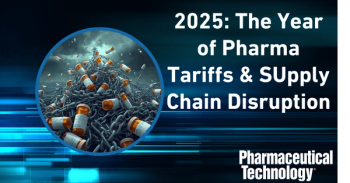A major revision of the International Council for Harmonisation’s (ICH) Q9 (R1) was published earlier in 2023, and the updates help to gain an understanding of lifecycle management, training materials, and other insights important to the industry, according to a session at the 2023 PDA/FDA Joint Regulatory Conference in Washington, DC (1).
In the session “The New ICH Q9 Guideline: The Next Generation of Quality Risk Management,” Alex M. Viehmann, division director, Office of Pharmaceutical Quality (OPQ), Center for Drug Evaluation and Research (CDER), FDA, and Denise M. DiGiulio, head of Global Audit and Inspection Management, Genentech, both gave an overview of the changes to ICH Q9 (R1) and the lifecycle management of risks to ensure an ongoing state of control.
Read the following articles for more in the ICH Q9 revision:
https://www.pharmtech.com/view/knowledge-as-the-currency-of-managing-risk-a-smart-investment-for-patients
Viehmann dived into the milestones of ICH Q9 R1, including the revision topics of subjectivity in quality risk management (QRM), product availability risks, formality in QRM, risk-based decision making, risk review, and hazard identification. As for the topic of subjectivity, Viehmann said how high levels of subjectivity in risk assessments and in QRM are problematic and are not aligned with the 1st QRM principle of Q9. Although this cannot be fully eliminated, it can be controlled by addressing bias and assumption with the proper use of QRM tools and use of relevant data.
Another example of a revision Viehmann went over is formality, in which many of those in the industry, including regulators, have a lack of understanding and uncertainty surrounding the topic. “This was a big revision topic because we wanted to get rid of the concept of formality, like there is informal versus formal,” he said. The ICH Q9 R1 addresses this issue with the inputs of complexity, importance, and uncertainty, which should lead to the proper resources for QRM activity to be used more efficiently.
According to DiGuilio, QRM includes taking into account new knowledge and experience and certain lifecycle events that can impact the original quality risk management decision. This may trigger risk review, as processes need to be reevaluated to continue to be improved, and the knowledge we gain through experience after initial launch and commercial manufacturing can help the improvements align with ICH Q10.
In a case study example, DiGuilio described the role of QRM in an aging facility, as it downgraded from an initial qualification site with highly formal QRM experts and knowledge in a state of control to facility deterioration, with no upgrades to technology or any upkeeping due to a lack of knowledge in 10 year’s time. This also impacted the long-term cost and product availability, which needed a resolution. DiGuilio explained how a critical senior management role to maintain ongoing oversight to ensure sustainability of operational design, control, maintenance, repairs, and more can be beneficial.
There are also early warning signals, such as increase in equipment issues, higher levels of deviations, and a reactive management, because these concepts cannot ensure quality performance. As for implementing ICH Q9 (R1) in the industry and not in the case study, DiGuilio said how QRM is not a one-time activity, it is what the industry does on a daily basis. “I think it’s about creating a culture regulatory compliance and following risk awareness, and understanding that QRM isn’t really a one-time activity,” she said.
Reference
DiGuilio, D; Viehmann, A. The New ICH Q9 Guideline: The Next Generation of Quality Risk Management. Presentation at the 2023 PDA/FDA Joint Regulatory Conference, Washington, DC, Sept. 18–20, 2023.





